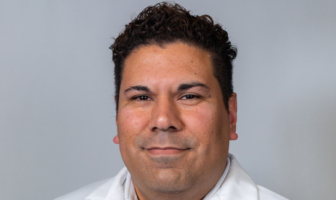Dr. Carlo Gavino shares everything you need to know about hair loss.
Sponsored Content
Dr. Carlo Gavino is a board-certified dermatologist, dermatopathologist, and anatomic and clinical pathologist. After attending the University of the Philippines College of Medicine, he completed a pathology residency at the University of Texas Southwestern Medical Center in Dallas and a dermatopathology fellowship at the University of Alabama at Birmingham. Gavino then completed his dermatology residency at UT in Austin. He is a diplomate of both the American Board of Dermatology and the American Board of Pathology. He is also a fellow of the American Academy of Dermatology and the College of American Pathologists. Gavino sees patients of all ages and specializes in general dermatology, cosmetics and surgery. In addition, he has extensive training and expertise in the diagnosis and management of hair-loss disorders.

What is alopecia?
I frequently have patients come to me saying they may have alopecia, thinking alopecia is a specific diagnosis. Alopecia, instead, is a general term that means loss of hair. If one is shedding or losing hair, they are said to have alopecia. Although the scalp is most commonly involved, any part of the body may be affected by alopecia.
Are there different types of alopecia?
There are several different types of alopecia, and they are generally categorized into non-scarring and scarring forms. Non-scarring alopecia causes hair loss without permanently damaging the hair follicles and without impairing their ability to regrow. By contrast, scarring alopecia can destroy and lead to the permanent loss of hair follicles.
I am shedding a lot of hair. How can I tell what type of alopecia I have?
Non-scarring alopecia typically causes diffuse shedding with no associated redness, tenderness, pain or itch. Examples of non-scarring alopecia are telogen effluvium, pattern alopecia and alopecia areata. Telogen effluvium causes a dramatic and rather rapid type of hair shedding. It happens three to six months after a stressful life event and resolves six months to one year later. Pattern alopecia is also known as andro- genetic alopecia and can affect both men and women. As the name androgenetic implies, it runs in families and is driven by the actions of testosterone. Unlike telogen effluvium that resolves on its own, pattern alopecia is not reversible. Alopecia areata is a non-scarring alopecia that results in patches of hair loss. It is an autoimmune condition in that one’s immune system attacks hair follicles. It varies in severity and degree of involvement. Scarring alopecia, on the other hand, is usually associated with redness, pain, tenderness, itch and/or formation of pimple-like bumps. Examples of scarring alopecia are frontal fibrosing alopecia, lichen planopilaris and central centrifugal alopecia.
If I am losing hair, do I need to see a dermatologist?
Because there are several different types of alopecia, seeing a board-certified dermatologist, preferably one who has an expertise in hair-loss disorders, is very important. The dermatologist will gather historical information and will conduct a thorough physical exam to help figure out what type of alopecia you have. Bloodwork is frequently ordered to determine if there is an underlying cause to the hair loss, such as thyroid disease. In addition, a hair biopsy may be necessary for diagnosis. A hair biopsy is a simple procedure that involves obtaining a pencil-eraser-sized piece of the scalp, sending it to the lab and studying it under the microscope. The history, physical-exam findings, bloodwork results and biopsy results all help the dermatologist formulate a plan to control and treat your hair loss.
Do you have any hair-care tips you can share?
It is normal to shed 100 to 150 hair strands per day. Shampooing daily is not harmful to the scalp and hairs. The scalp is an extension of the skin and therefore needs to be cleansed daily if possible. Use a conditioner to restore moisture to the hair strands. Gently massaging the scalp while shampooing does not worsen hair loss and shedding. Hairs that shed while shampooing were already going to fall out due to the normal cycling of the hair follicle, or as a result of underlying alopecia. Heat and ultraviolet radiation are harmful to the scalp and hairs. When drying hair, use the blow-dryer as far away from the scalp as possible. When going outdoors, wear a hat to protect the scalp from the sun.
For more information, visit tru-skin.com.



